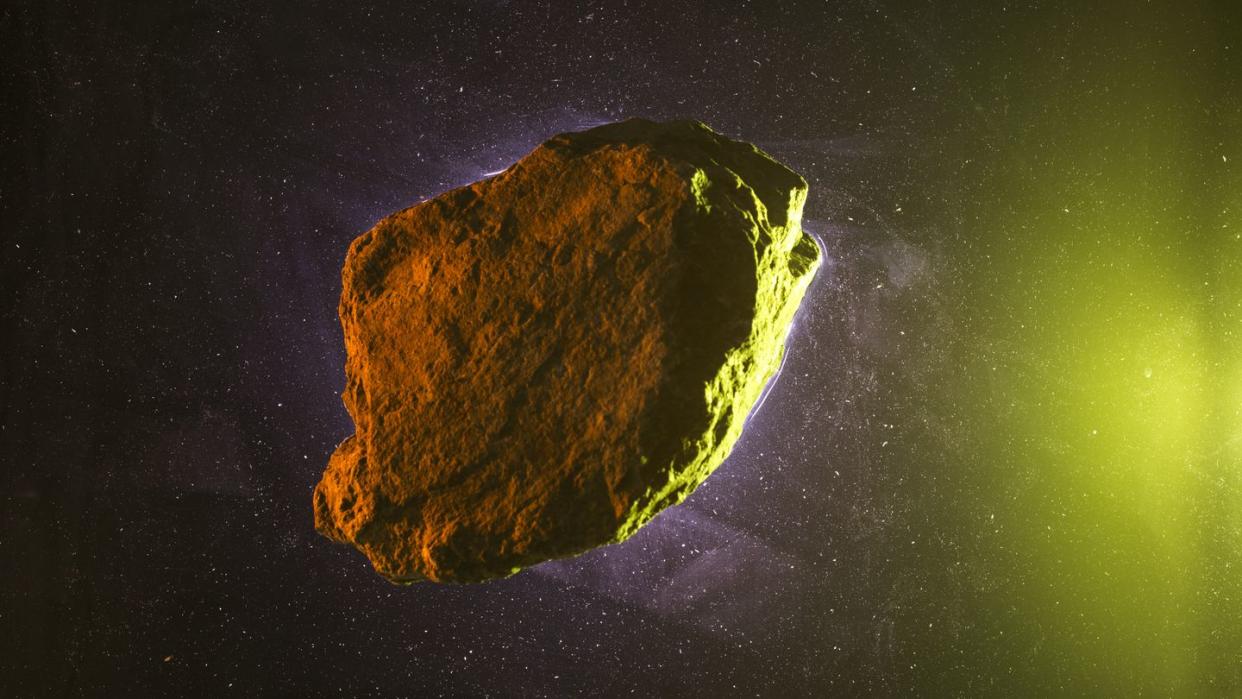Scientists Discovered the Possible ‘Seeds of Life’ in Asteroid Matter

"Hearst Magazines and Yahoo may earn commission or revenue on some items through these links."
The idea that the origins of life come from beyond our Solar System has been around for a very long time, and now analysis of new asteroid samples is providing evidence for this “panspermia” theory.
In a new study, scientists from the Tohoku University confirm that asteroids like Ryugu—visited by JAXA’s Hayabusa2 spacecraft—have transported cometary organic matter to the near-Earth region.
This confirmation, along with other markers of life found on Ryugu (and Bennu, visited by NASA’s OSIRIS-REx mission) is providing strong evidence that meteorites and asteroids might’ve delivered the right life-making stuff into Earth’s priomordial ooze billions of years ago.
In September of 2023, NASA finally got its hands on asteroid dust courtesy of the spacecraft OSIRIS-REx—and so far, the news is very good. But in Japan, getting your hands on some otherworldly space rock is relatively old hat. Japan’s space agency, JAXA, launched its first asteroid sample mission named Hayabusa (“peregrine falcon”) some 20 years ago, and used it to recover samples containing organic matter from asteroid Itokawa.
However, Hayabusa didn’t go off without a hitch—in fact, it almost failed to capture an asteroid sample at all. Luckily, some particles were found in the sample container (likely entering when the spacecraft impacted Itokawa’s surface) when the craft returned in 2010. Wanting more asteroid material than just a few grains of dust, JAXA launched the follow-up mission Hayabusa2, with its sights set on a near-Earth object called Ryugu. Luckily, things went much more smoothly this time, with JAXA retrieving 5.4 grams of material in 2020.
This small-but-mighty sample has already been a treasure trove of cosmic information. In 2022, scientists confirmed that the asteroid contained amino acids—which are quite literally the building blocks of life—as well as the nucleobase uracil, which helps form RNA. Now, a new study from scientists at Tohoku University is piling on the good news. The team behind the paper announced that, after an intensive investigation, they can confirm that Ryugu supplies are sufficient evidence of “cometary organic matter being transported from space to the near-Earth region,” according to a press release. Details of this discovery were published in the journal Science Advances earlier this month.
Because Ryugu has no atmosphere, its surface layer is exposed to the ravages of space—mainly micrometeoroids of cometary dust. Lead author Megumi Matsumoto and her team discovered incredibly small “melt splashes,” measuring only 5 to 20 micrometers across. These splashes formed when micrometeoroids struck Ryugu’s unprotected surface.
“Our 3D CT imaging and chemical analyses showed that the melt splashes consist mainly of silicate glasses with voids and small inclusions of spherical iron sulfides,” Matsumoto said in a press statement. “The chemical compositions of the melt splashes suggest that Ryugu’s hydrous silicates mixed with cometary dust.”
A closer inspection of these “melt splashes” revealed carbonaceous material that was similar to primitive organic matter. However, since it’s not combined with nitrogen or oxygen, it’s just an ingredient of organic matter—not quite organic matter itself.
“We propose that the carbonaceous materials formed from cometary organic matter via the evaporation of volatiles, such as nitrogen and oxygen, during the impact-induced heating. This suggests that cometary matter was transported to the near-Earth region from the outer solar system,” Matsumoto added. “This organic matter might be the small seeds of life once delivered from space to Earth.”
Although NASA isn’t nearly as far along in its analysis of samples from the asteroid Bennu (they only just pried the sample container open last week), preliminary analysis similarly confirms the existence of carbon and water.
The idea that the origins of life originally arrived from somewhere beyond our cosmic neighborhood is a very old one, but only now do scientists have the tools—and the rocks—to put that 2,500-year-old theory to the test.
You Might Also Like

